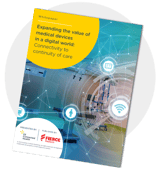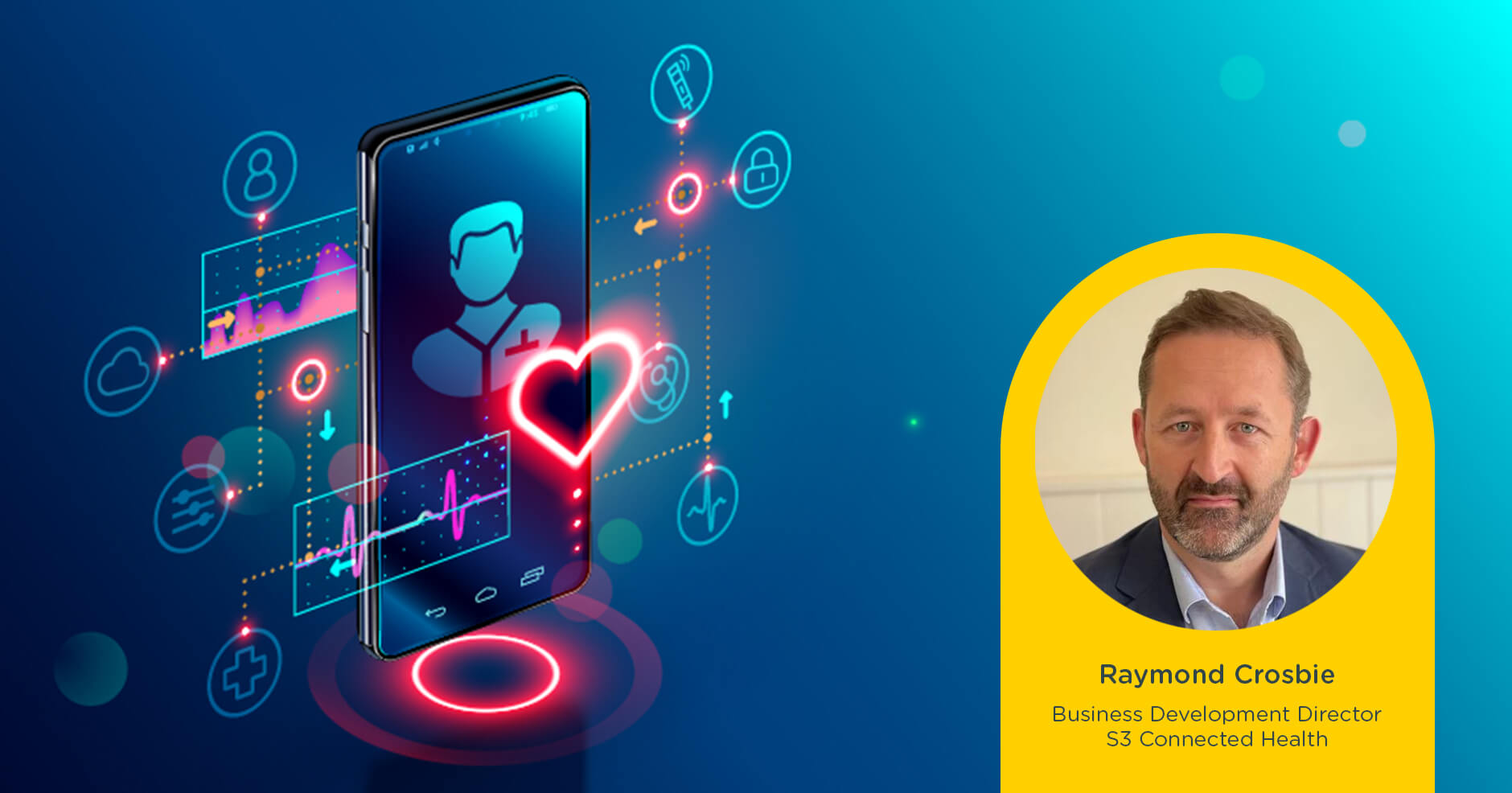Connected medical devices are now essential in modern healthcare. Sensors, connectivity protocols, cloud architecture and medical applications are all essential building blocks for engineers creating connected care ecosystems based on in-hospital as well as wearable and implantable devices. But the success and impact of the overall solution hinges on the capture, transmission, storage, and analysis of data points for the benefit of delivering more effective and efficient treatments and therapy.
While most companies have a defined primary goal for data, many fail to unlock its full potential for all stakeholders who can benefit. Faced with siloed internal organizations and complex healthcare environments, this can be a significant hurdle to overcome.
Data capture, analysis, and insight each represent possible stumbling blocks
- The wrong kind of data can be captured, or the right kind can be captured incorrectly at source, limiting useable data points and leaving an incomplete data set.
- At the analytical level, data can be incorrectly or incompletely examined leaving valuable insights missed and unavailable for consideration.
- Data and insight availability is generally the final output, but this has many potential failure points, from not presenting data in a way that is integrated and accessible by the end user, or presenting it in a non-actionable way, resulting in stakeholders failing to act.
Understand the range of stakeholders impacted by insights
We tend to focus on patients in our industry and rightly so. But data insights must also reach other stakeholders to improve patient experiences and outcomes.
This means breaking down silos not just across a complex healthcare infrastructure, but within the medical device company. To do this, you must understand the role each stakeholder plays, how they’ll benefit from insights, and how to get the right insights to the right group.
Use journey mapping to determine what data patients and carers will need
The role of patients and carers can vary from a passive participant, such as when receiving in-hospital or in-clinic care, to an active participant in treatment or monitoring through a drug delivery device, wearable, or digital companion.
Detailing the patient journey is key for understanding their roles, the tasks required of them, and the burden of use as a result.
A patient journey map can help device manufacturers and operators learn what data patients, carers, their clinicians, and other stakeholders will need. It also informs solution design, that will positively on-board and engage patients to participate in data capture activities over time, and be responsive to data outputs that direct treatment, lifestyle, or behavior changes.
Delivery of targeted data, metrics or status feedback to the patient is often seen as a key activity for long term engagement and solution adoption. This will help patients to better understand the value of their participation and encourage ongoing engagement.
Integrate with clinical workflows and EHRs to improve data sets and adoption
A wider data set with streamlined insights enables delivery of treatments and interventions that are personalized to the patient, in a more timely manner. A data-rich healthcare system brings improved clinical efficacy and patient safety, while supporting automation of processes.
Yet both rely on engaging healthcare professionals successfully with any new device or solution. It’s a challenge to insert a new data point or capture system into established clinical workflows and busy work schedules. Integrating a new device or solution with a hospital EHR can reduce chances of data duplication and increase chances of adoption and sustained use.
EHR integration allows a seamless push and pull of data, but also gives a single point of access for device-generated data. This avoids multiple system logins, saving HCP time and first-hand presentation of data to the clinical staff, reducing information overload, and ultimately increasing chances of adoption and sustained use of the device or solution.
EHR integration and interoperability standards, such HL7 and FHIR are being designated in the US, but EU and rest of world have some catching up to do in the regard.
Read more about interoperability in Hany Mina's latest blog.
Consider immediate and long-term beneficiaries within medical device companies
Most medical device companies are typically engineering-rich, product-centric organizations with lean manufacturing processes and supply chains at the core.
Adding connectivity to a portfolio of medical devices and enabling data capture brings companies much closer to the end user, and actual usage. This presents an opportunity to transition from a transactional product focus to a more valuable, service-centric company. Adapting a service orientated model can give opportunities for product differentiation, while bringing new commercial terms that benefit the payers and more predicable revenue streams.
For in-hospital equipment, a typical example is moving from a model with high capital expenditure, consumable resupply, and a service contract; to a data and connectivity-enabled, pay-per-use model.
By gathering data in real-time, the medical device supplier can monitor device performance, ensure reliability, and manage preventative maintenance, while dynamically managing an inventory of consumables and invoicing based on actual treatment delivery. See our recent case study on developing a connected drug delivery device for more.
There are many opportunities for embracing the real-world data generated across the organization. Supply chain and manufacturing are immediate beneficiaries, as there can be closer management of inventory, SKUs, and resupply triggers. Companywide initiatives can be difficult, however. Success may come from starting small, within a single department, before breaking down silos and scaling across the organization.
Short-term, economic benefits like those listed above can be decisive in driving the change toward a connected, service-orientated offering. Data collected is targeted and meaningful, and savings as a result can often cover the cost of developing the connected ecosystem in just a few years, after which other devices and departments can start to reap the benefits of data without the same start-up time and outlay.
Data collected from a network of deployed devices, for example, can feed into sustaining engineering and new product development. The analytics from this data can accurately capture real-world use, giving specific data on use errors, failures, and user demographics allowing improvement of the current device, and the development of new and adjunctive treatments.
Conclusion
The decision to invest in a technology solution to enable data collection and analytics should not be based on bringing benefit to a single stakeholder but starting small and developing a pilot with short-term benefits can help secure the buy-in needed to embrace company-wide change.
Whether you start with a small or large project, considering the full spectrum of stakeholders is essential. It brings an improved return on investment and a wider impact of the data both inside and outside the organization. The data will also allow for greater intra-company collaborations and new relationships with healthcare systems and payers. Understanding your data destinations and impacts from the outset is a core element of device development in a connected world.

To learn how to make your medical device more adaptable to deliver value into the future, download the full whitepaper now and gain free, immediate access.


